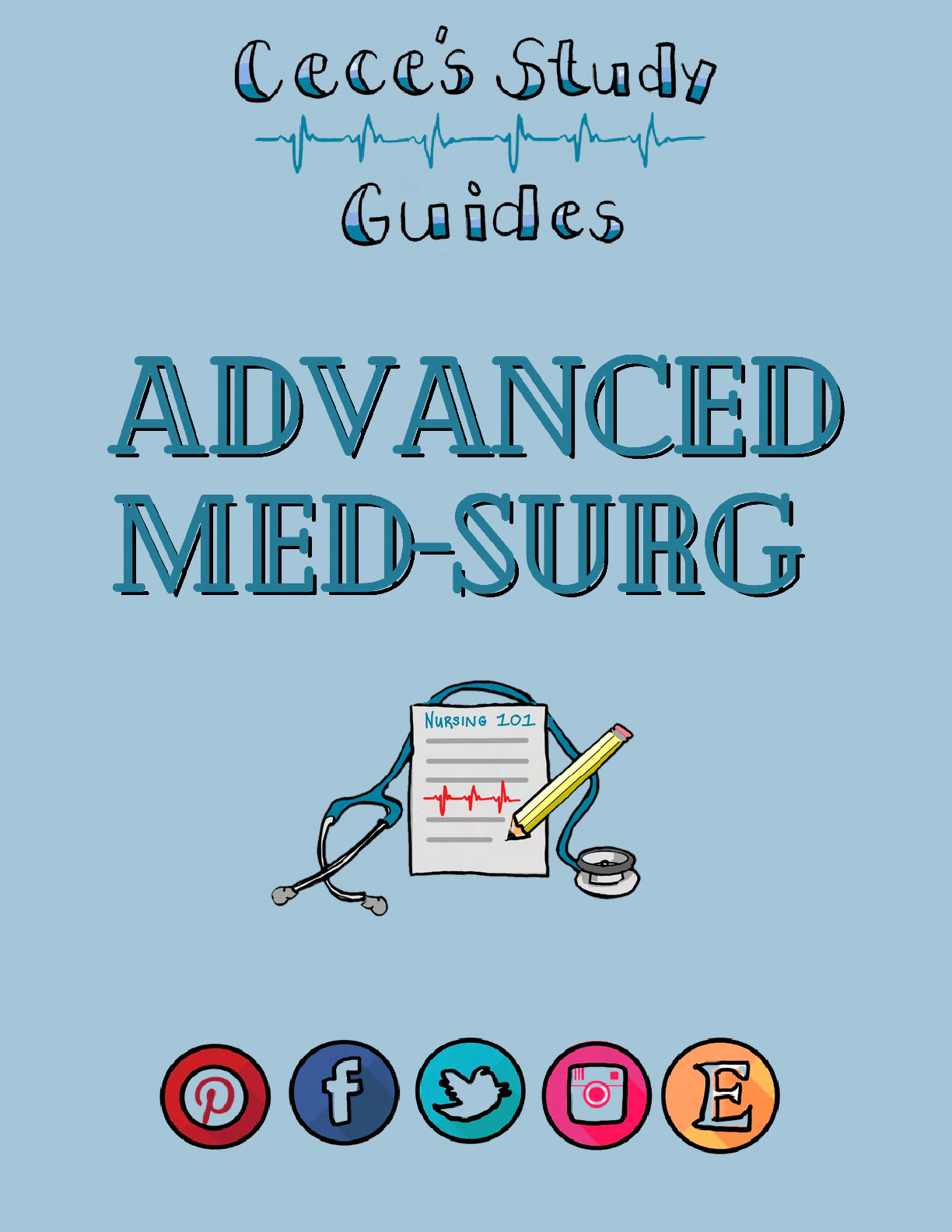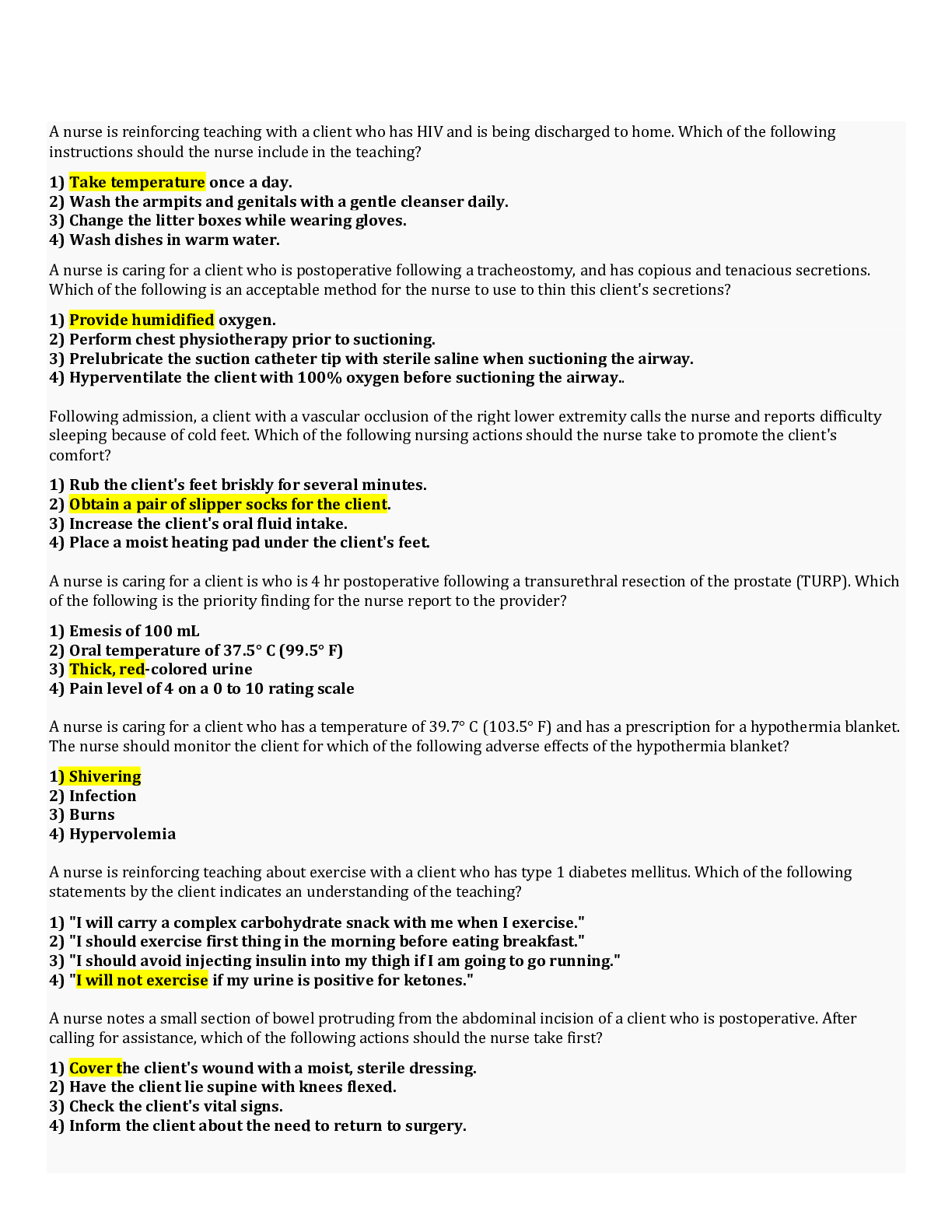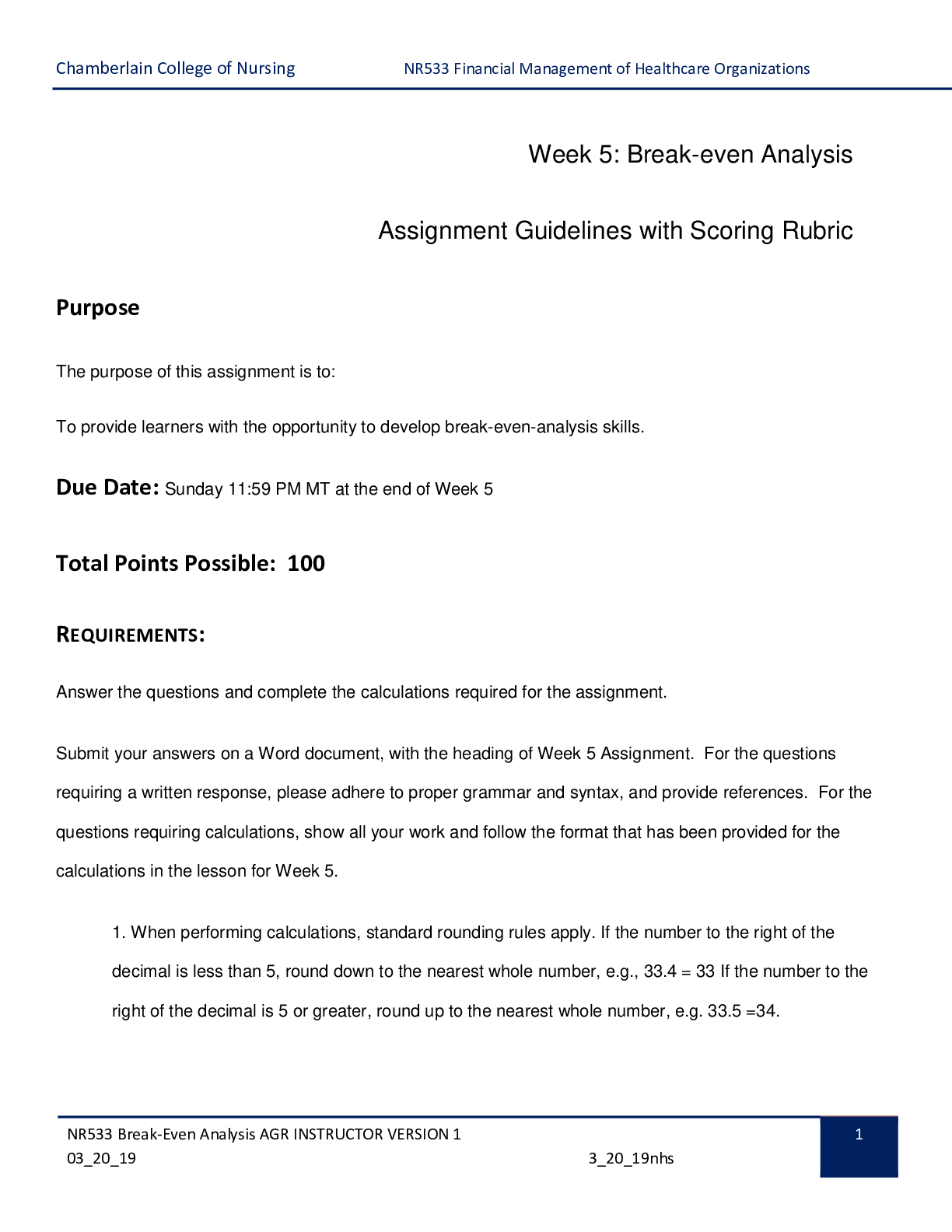Psychology > STUDY GUIDE > Myers_Abnormal_Behavior_notes. Unit 12: Abnormal Behavior (All)
Myers_Abnormal_Behavior_notes. Unit 12: Abnormal Behavior
Document Content and Description Below
Unit 12: Abnormal Behavior I. Introduction A. People love to study the abnormal. By studying abnormal psychology, the hope is to gain a better understanding of normal psychology. B. 450 million pe... ople worldwide are estimated to have a psychological disorder. 1. The disorders vary by culture. 2. All cultures have depression and schizophrenia. C. There is a definite “gray area” between “normal” and “abnormal.” Drawing a cutoff line and between the two is not always easy. II. Defining psychological disorders A. Psychological disorders are patterns of thoughts, feelings, and behaviors that are deviant, distressful, and dysfunctional. B. Notice the “3D’s” of psychological disorders… 1. Deviant – This means the behavior strays from what is normal. The norms of a society are determined by different things… a. Culture – one culture’s norms may be another’s deviance. b. Time period – what used to be odd may now be normal, or vice versa. 2. Distress – Just straying from the normal doesn’t make a disorder. They must also be bothered by what they do or see it as problematic. 3. Dysfunction – The abnormal behavior must also create problems in the person’s life. Whereas distress is on the inside, dysfunction sees the problem carried out in real life. III. Understanding psychological disorders A. “Therapies” for psychological disorders have been very crude in the past. Things were done like caging the insane, or beating/burning/mutilating them in some way. 1. The normal thinking was either that the person was possessed by an evil spirit or simply acting that way for attention. B. Philippe Pinel was a reformer who tried to replace brutality with care and loving treatment. C. By the 1800s, it was learned that syphilis affects the mind. This started the movement towards hospitals and away from jail cells. It also started two new approaches to psychological disorders… 1. The medical model is a movement that looks for biological causes of mental disorders. It believes: a. Mental disorders are diagnosed based on their symptoms. b. Mental disorders are cured through a therapy. 2. The biopsychosocial approach believes ALL behavior comes from the interaction of the body/genetics and one’s background/experiences as well as our thoughts. a. The “bio” and the “social” parts of the name simply refer to nature and nurture. b. The “psycho” part of the name is what we think about things. All three dance together. c. Different cultures tend to have different disorders. IV. Classifying psychological disorders A. People to classify things to define order. For instance, we can classify animals as “reptiles” or “mammals” or “birds” based on their characteristics. But, it’s tricky to classify psychological disorders. We do this mainly with the “DSM.” B. The DSM-5 is the current “disorder bible.” It’s the Diagnostic and Statistical Manual of Mental Disorders, Fifth Edition. The DSM-5 came out in 2013 and replaced the DSM-IV-TR (which came out in 2000). 1. The DSM-5 includes a diagnostic process and 16 clinical syndromes.2. It does not try to explain causes but tries to describe the disorder. 3. The DSM-5 is structured as follows: a. Axis I – Is a clinical syndrome present? i. Disorders usually diagnosed in infancy, childhood, and adolescence ii. Delirium, dementia, and other cognitive disorders iii. Mental disorders due to general medical condition iv. Substance-related disorders v. Schizophrenia and other psychotic disorders vi. Mood disorders vii. Anxiety disorders viii.Somatoform disorders ix. Factitious disorders (intentionally faked) x. Dissociative disorders xi. Eating and sleep disorders xii. Sexual disorders and gender identity disorder xiii.Impulse-control disorders not classified elsewhere xiv.Adjustment disorders xv. Other conditions that may be a focus of clinical attention b. Axis II – Is a personality disorder or mental retardation present? c. Axis III – Is a general medical condition, such as diabetes, hypertension, or arthritis, also present? d. Axis IV – Are psychological or environmental problems, such as school or housing issues, also present? e. Axis V – What is the global assessment of this person’s functioning? 4. The DSM gets good and bad marks… a. The DSM has been praised for being rather reliable in diagnoses. b. The DSM has been criticized for being too broad. i. Almost any behavior could be stretched into being some type of “disorder.” ii. The number of categories has increased from 60 in the 1950s to 400 today. iii. Also, the number of people diagnosed with something has increased substantially. 1. What used to be the regular “ups and downs of life” is now “bipolar disorder.” 2. What used to be sassiness is now “oppositional defiance disorder.” 3. What used to be fidgety is now “ADHD.” V. Labeling psychological disorders A. Many say putting a label on a person is not right. It generates expectations for that person and puts him or her in a box. B. David Rosenhan did a study in 1973 on labels. He and other normal people lied and said they heard voices talking to them. They were diagnosed with disorders. 1. The initial fact they were diagnosed might be okay. But later, the “causes” of their supposed problems were also pinpointed. C. In another experiment, people watched others on TV. The watchers were shown different labels for the people they were watching. Thus, the watchers drew different conclusions about the people on TV. D. Someone just out of prison or a mental hospital has trouble getting a job. E. Hollywood tends to perpetuate stereotypes too of mental disorders. A person is usually either funny, freaky, or a psychotic killer. 1. People with mental disorders are rarely violent, but often the victims. F. Labels can also lead to the self-fulfilling prophecy where a person’s expectations cause the expected result. [Show More]
Last updated: 1 year ago
Preview 1 out of 10 pages

Reviews( 0 )
Document information
Connected school, study & course
About the document
Uploaded On
Feb 28, 2021
Number of pages
10
Written in
Additional information
This document has been written for:
Uploaded
Feb 28, 2021
Downloads
0
Views
49

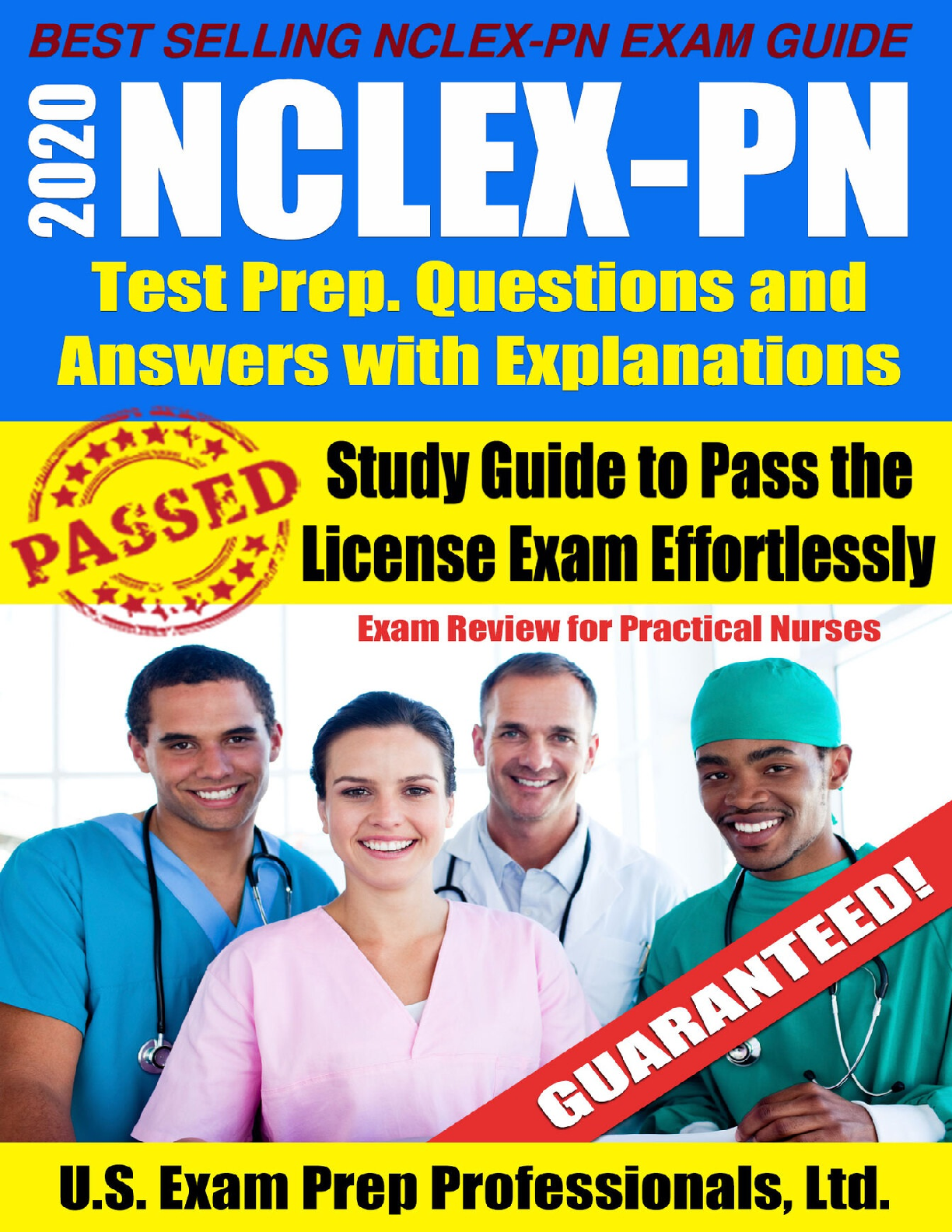
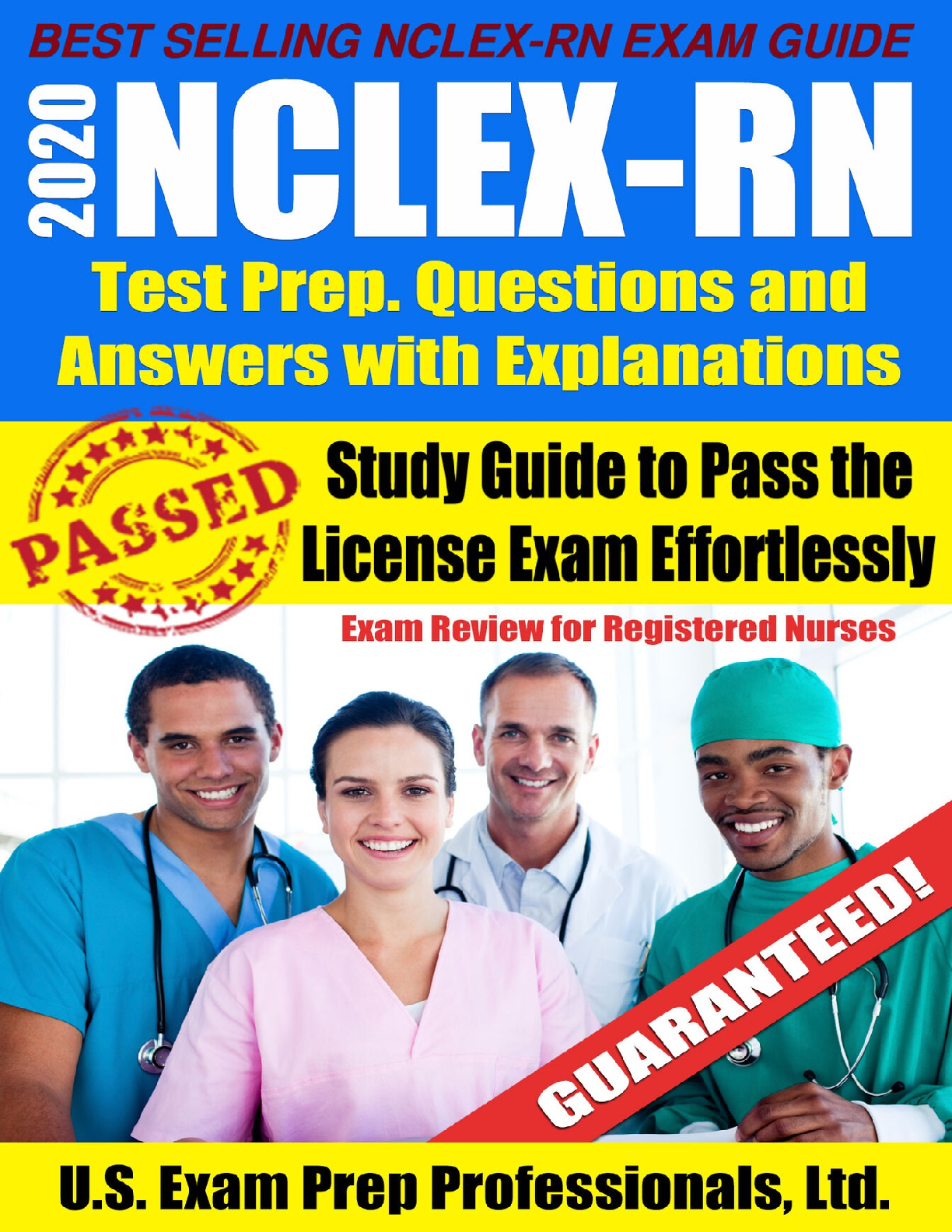
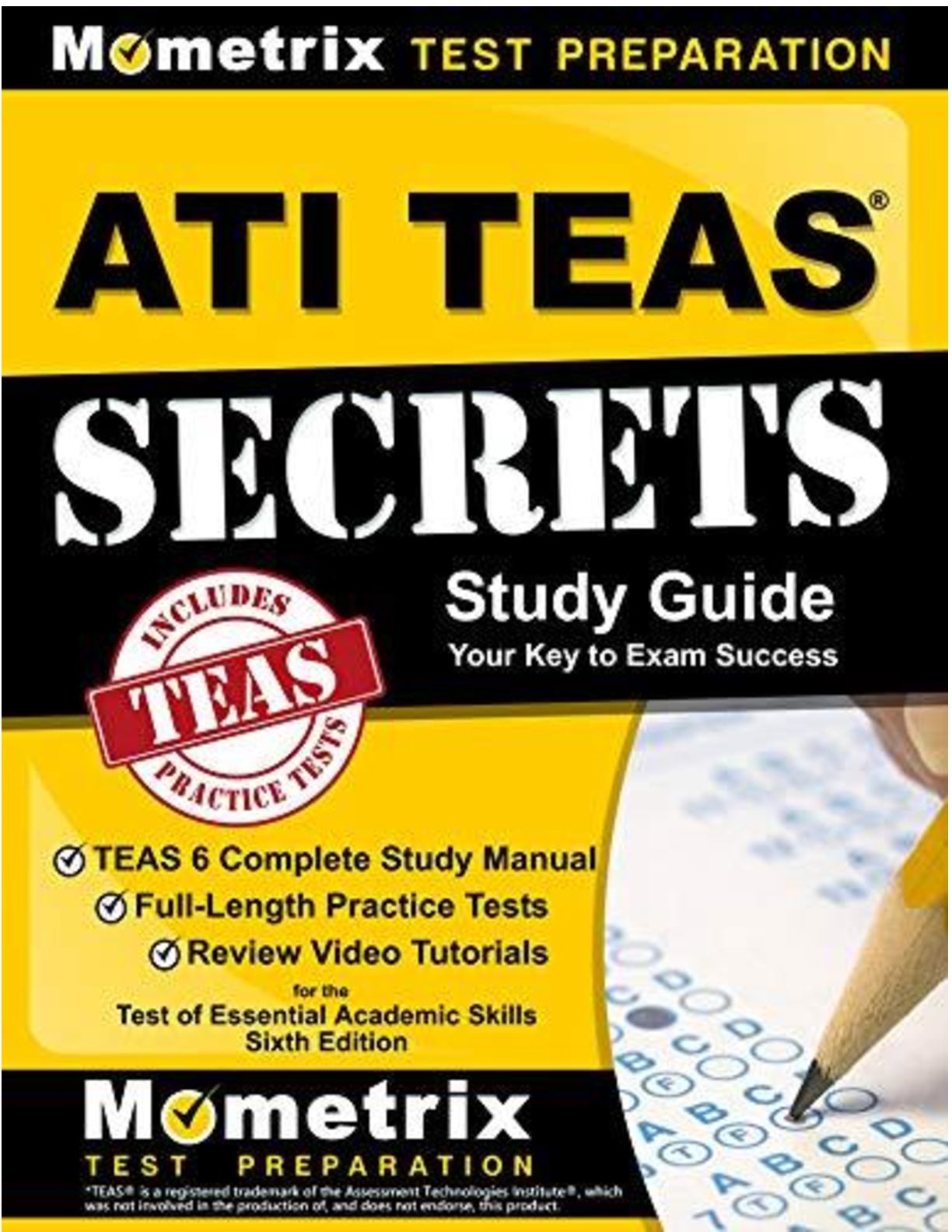
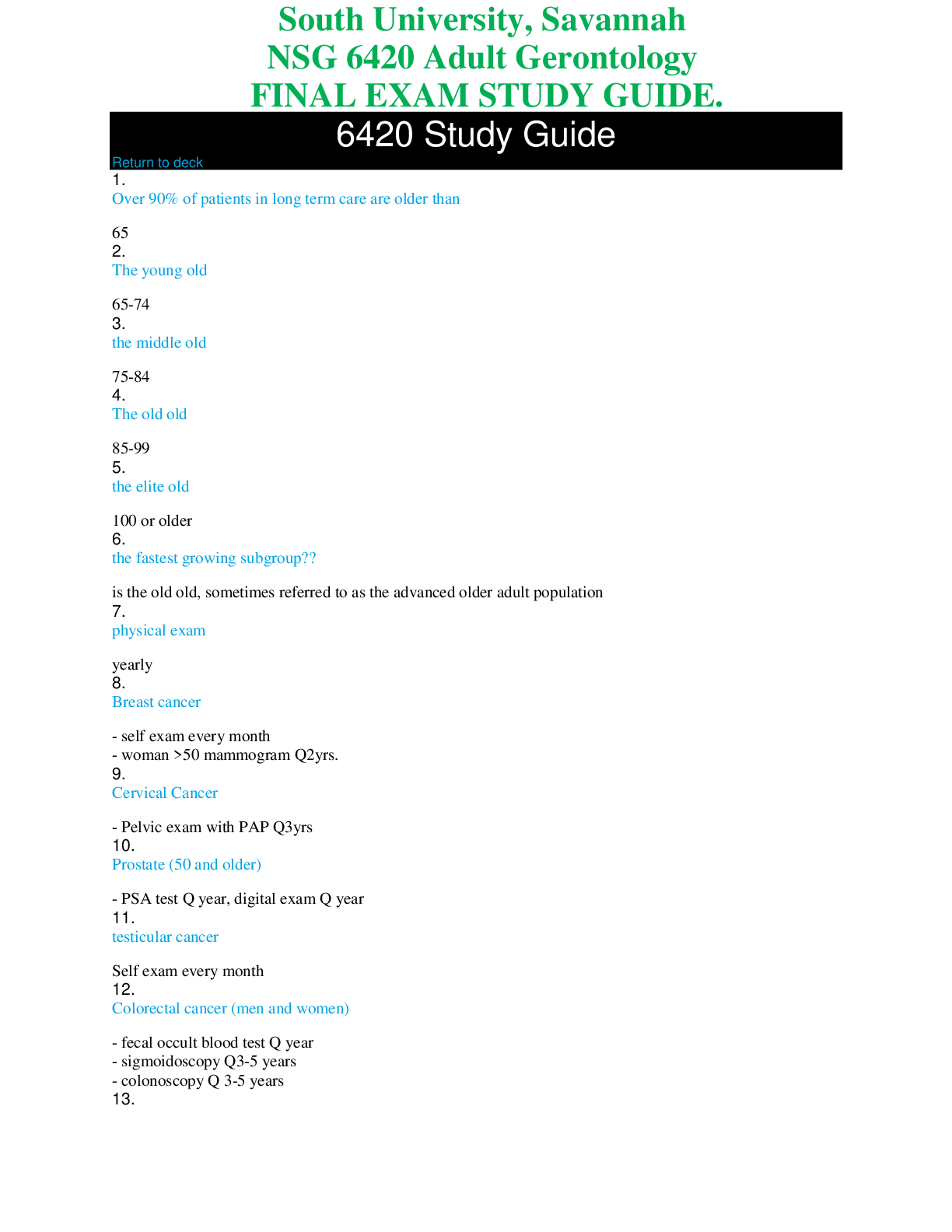
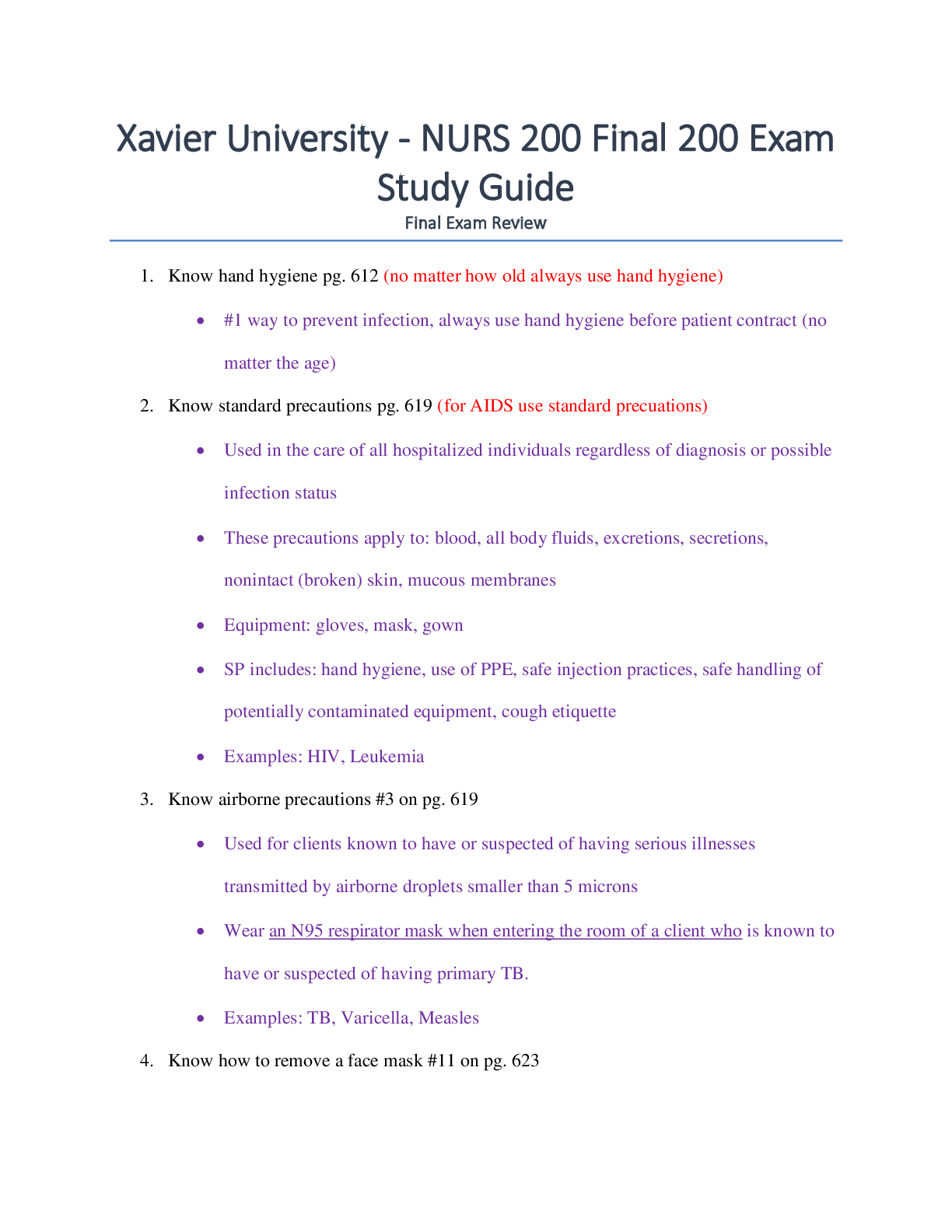
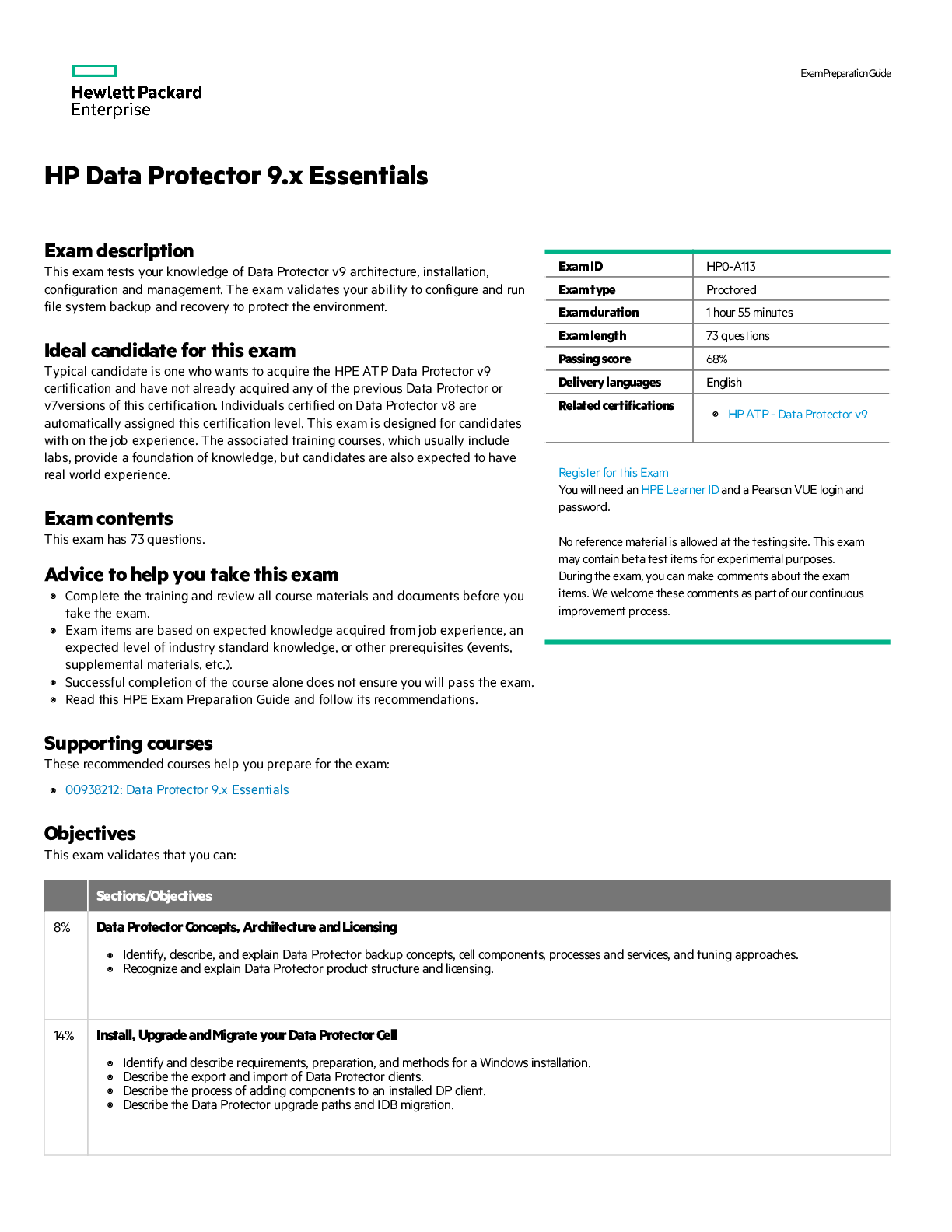
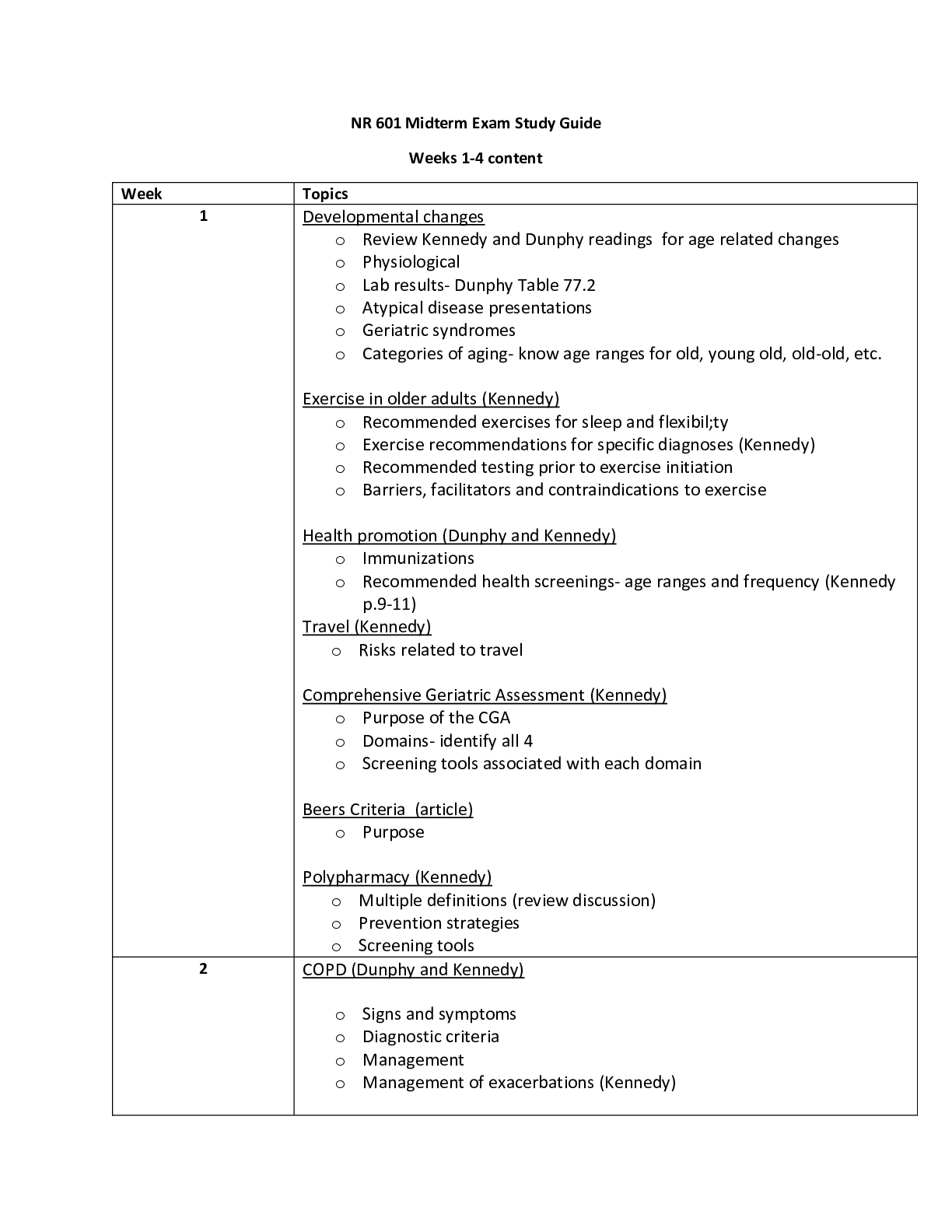
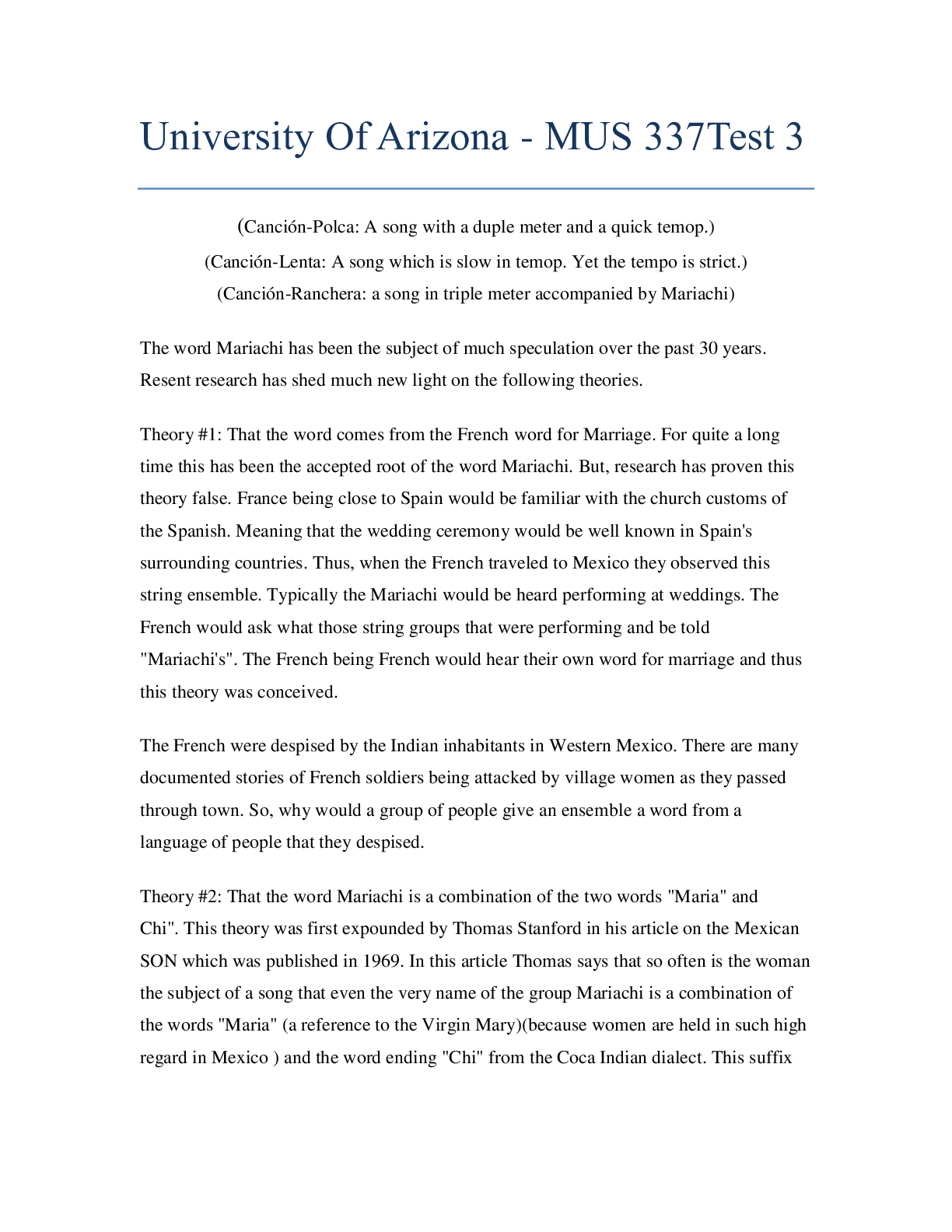
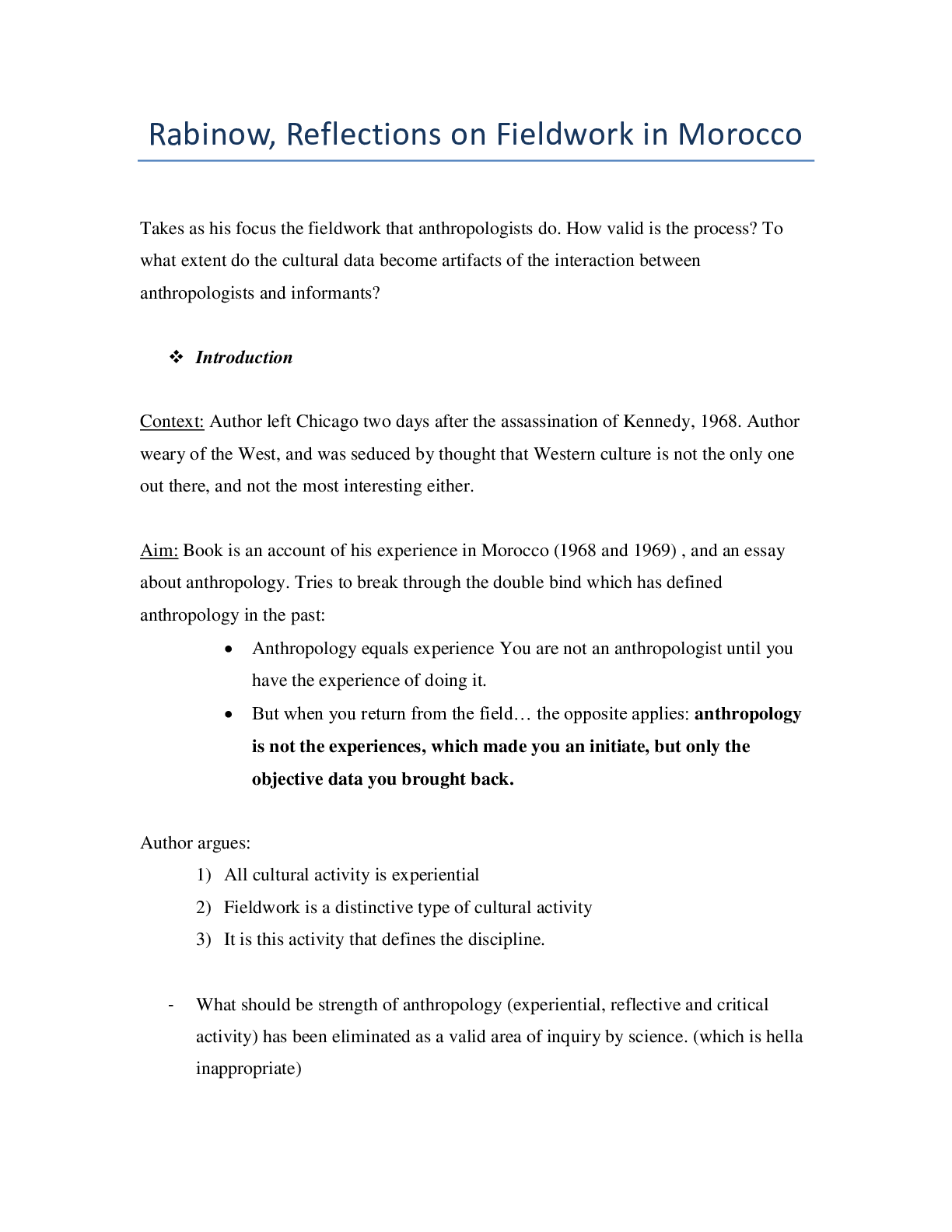
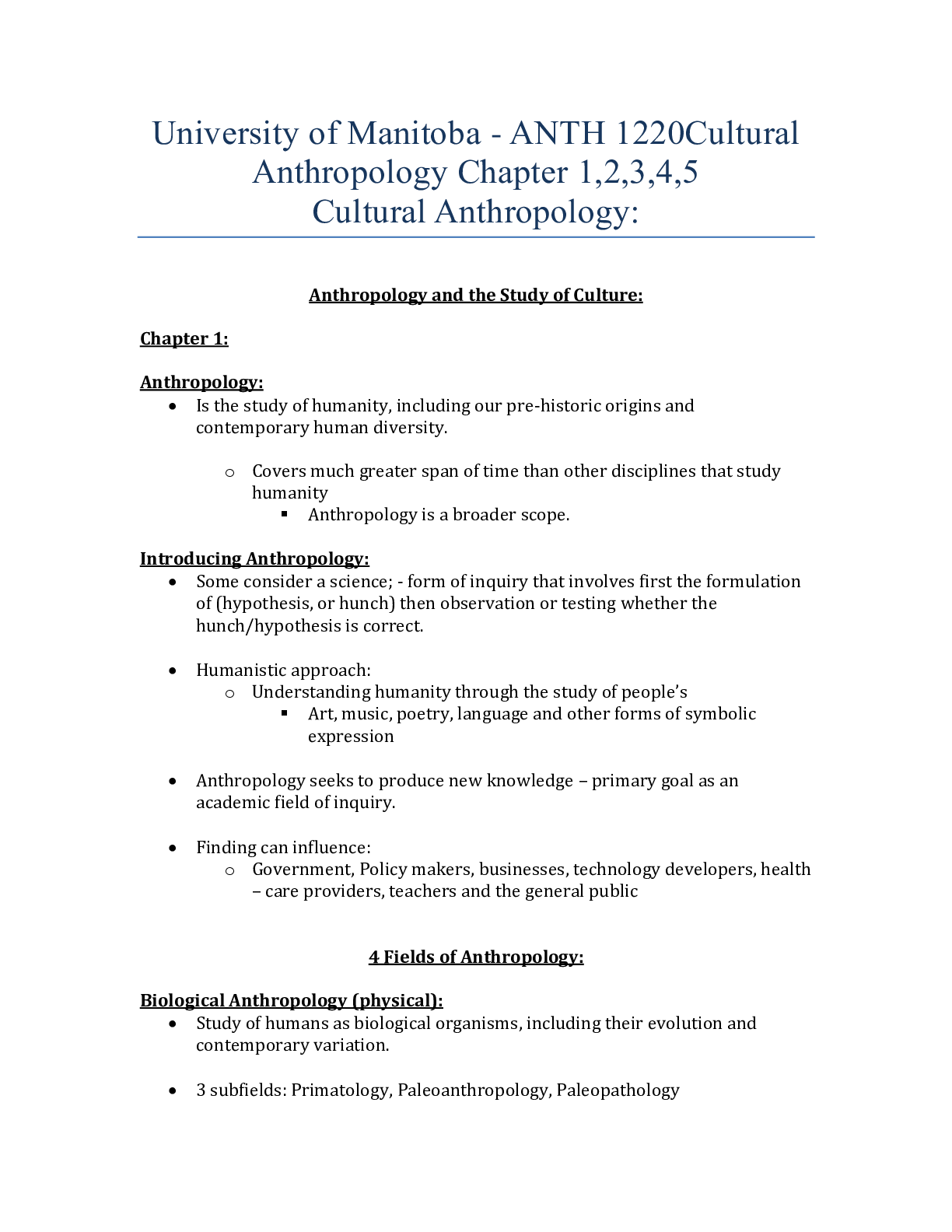
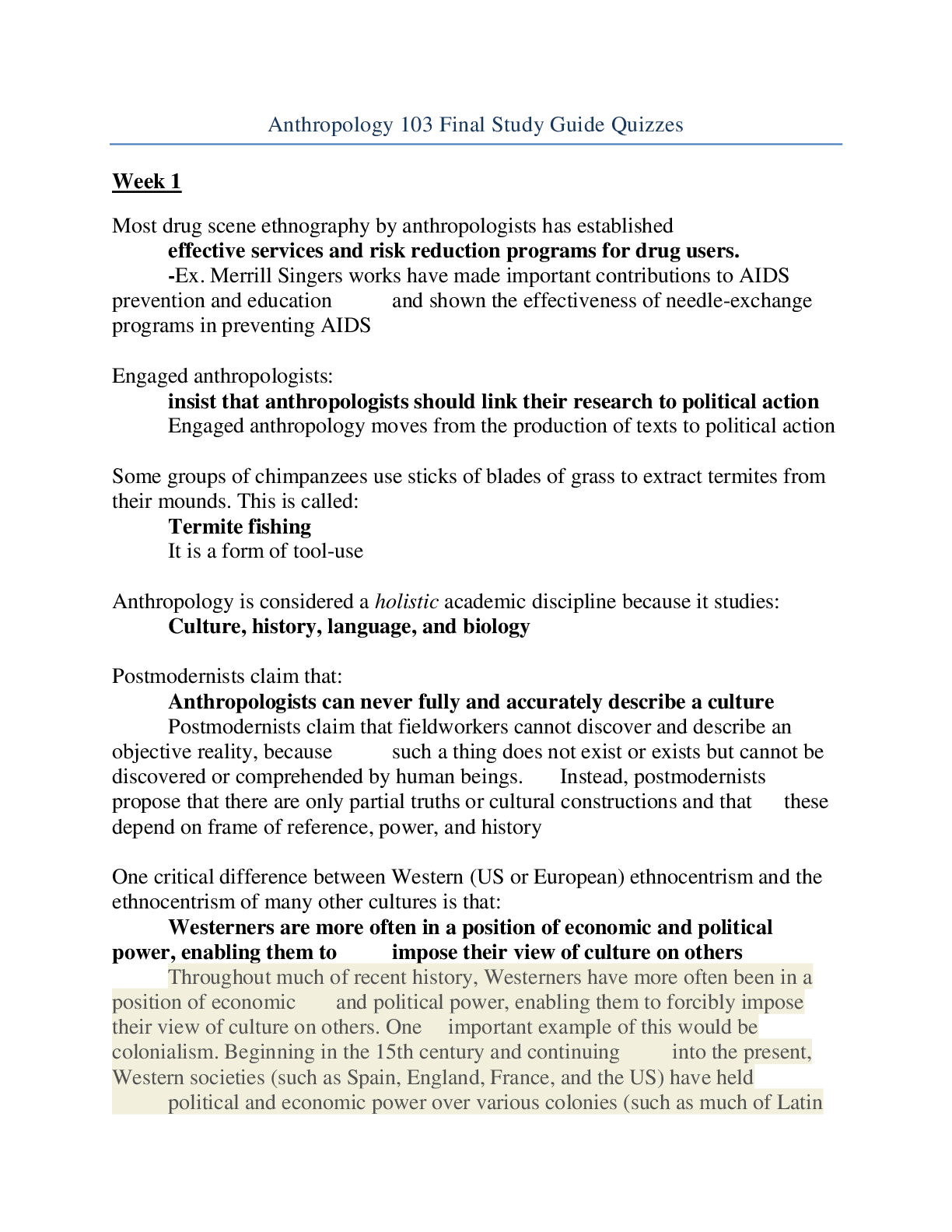
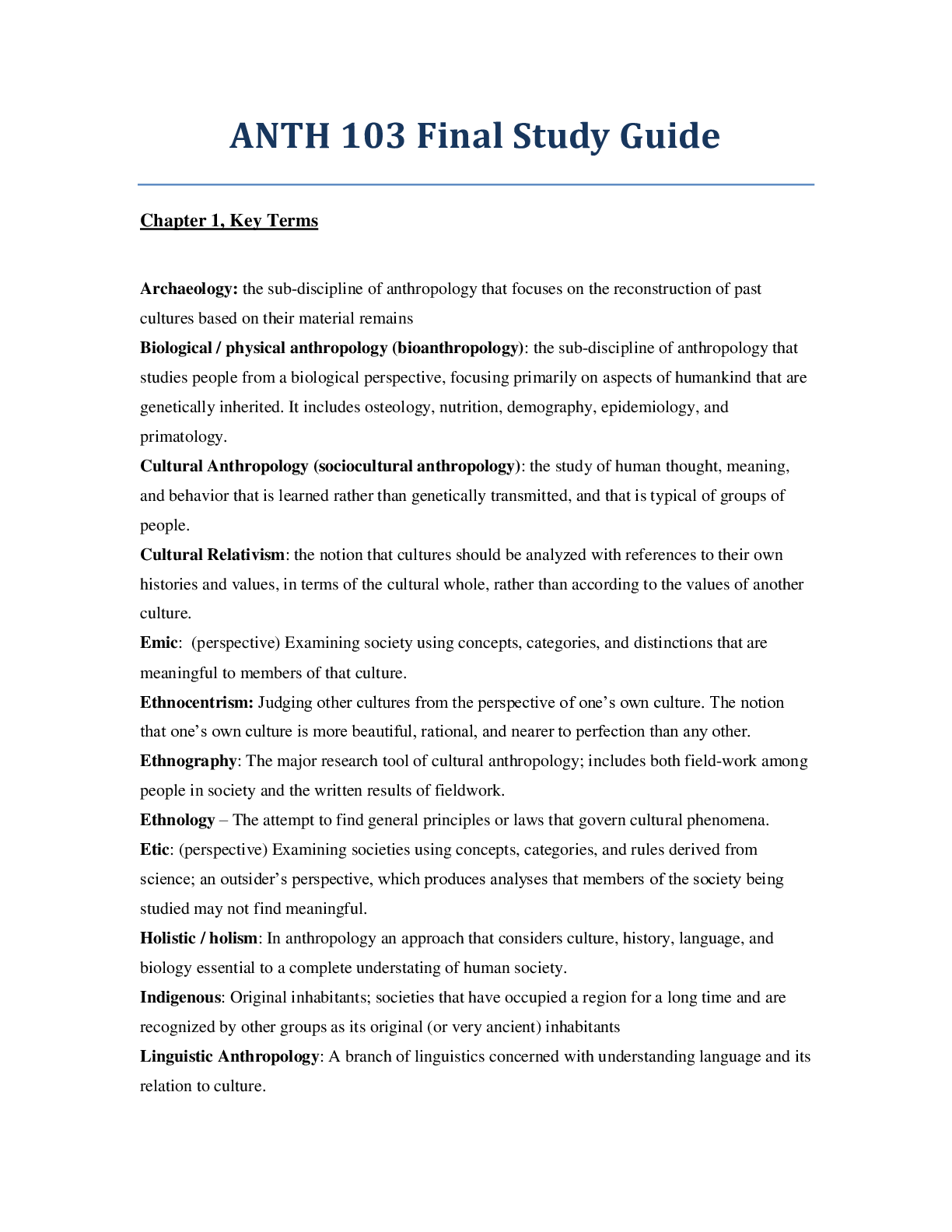
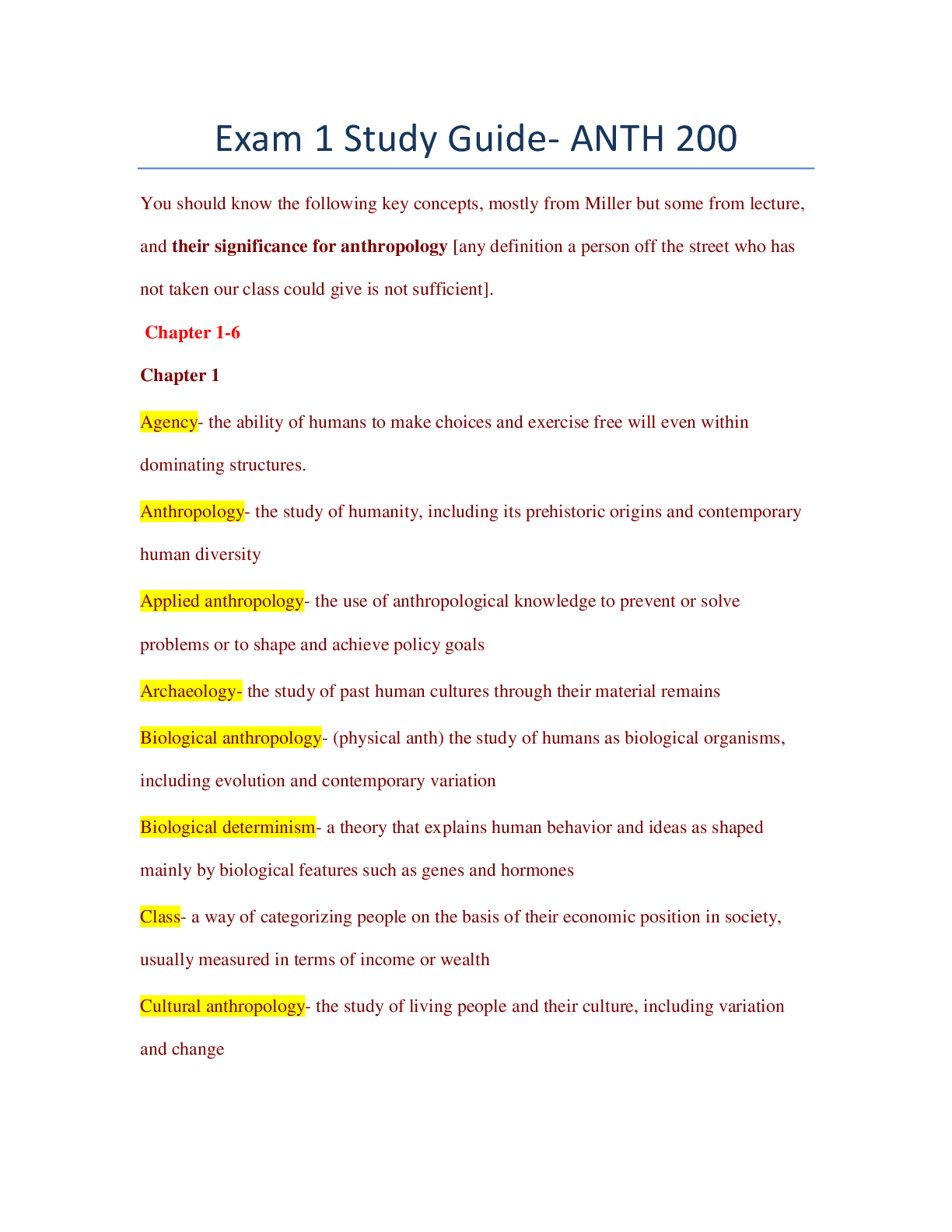
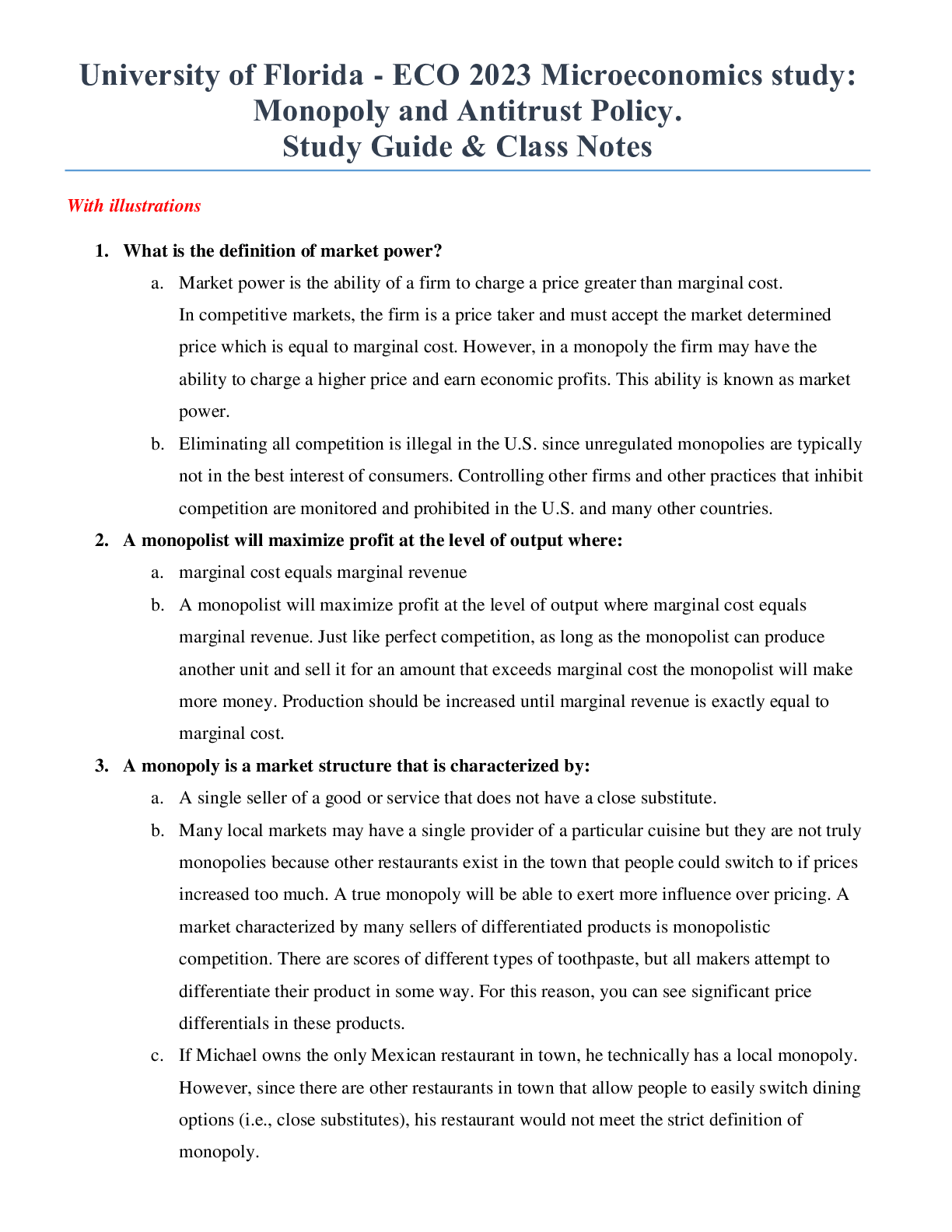
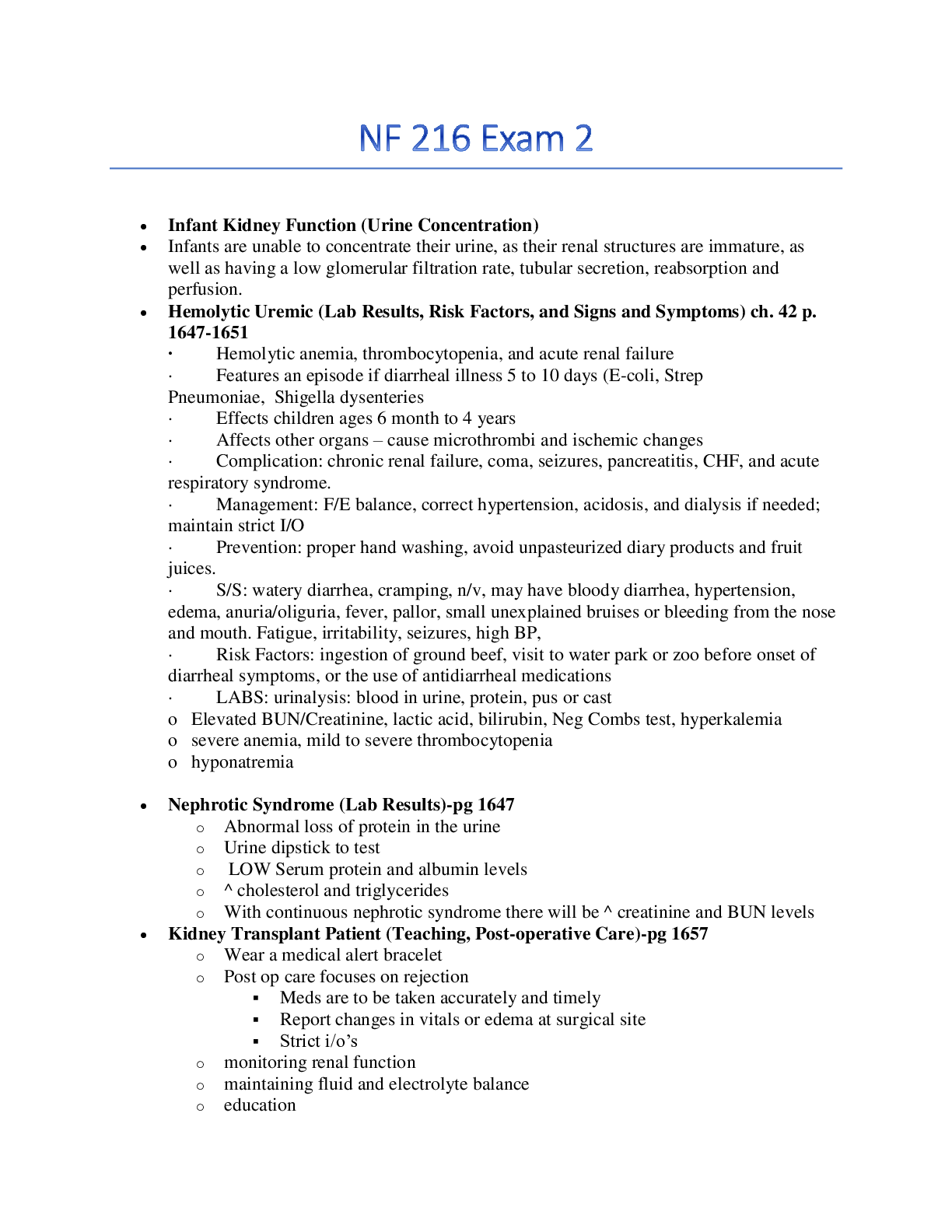
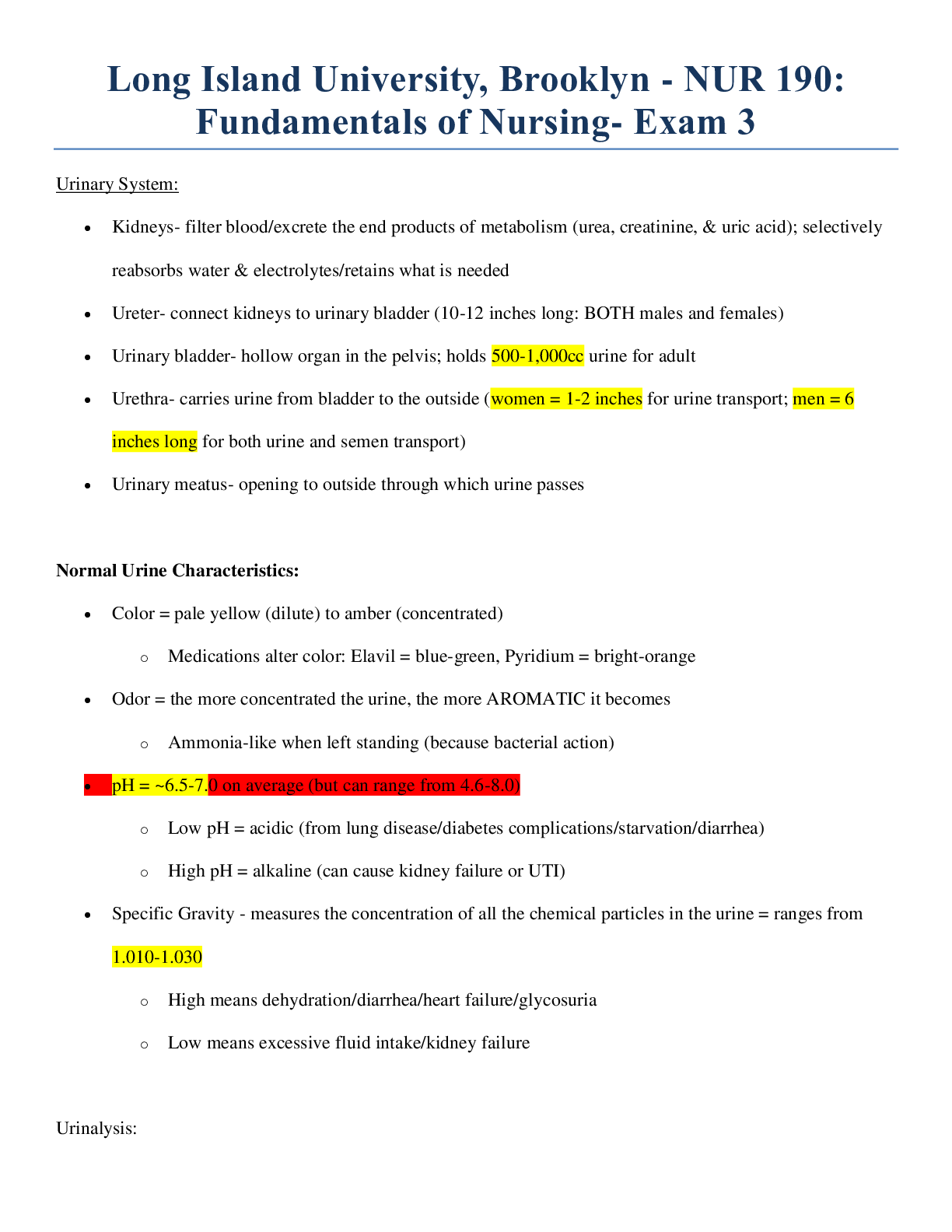







.png)

